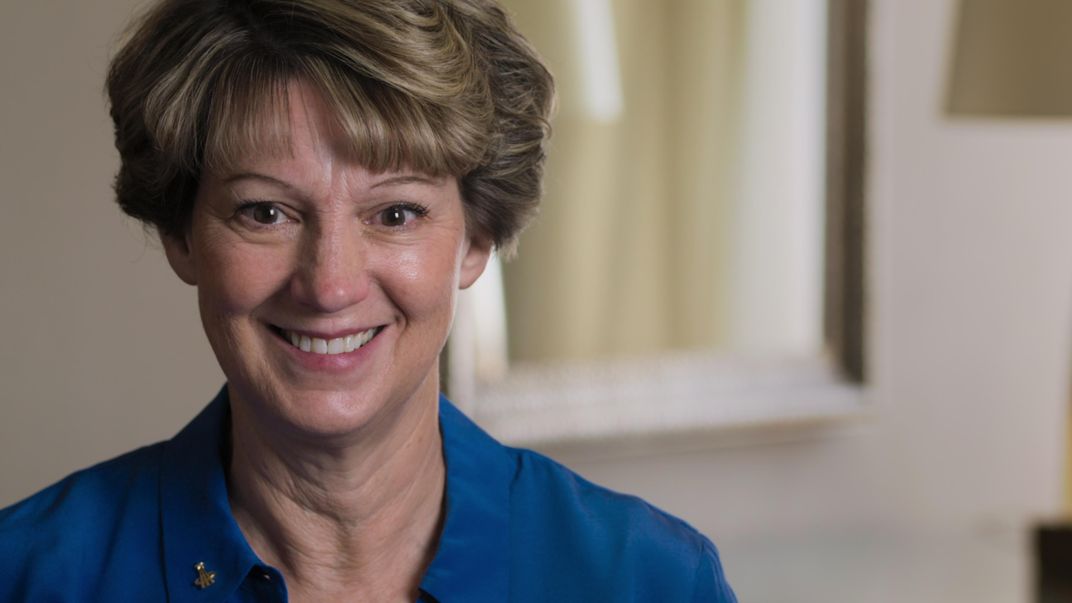Netflix Documentary Profiles the Women Who Could Have Been Mercury Astronauts
Thirteen women were excellent candidates for spaceflight, but the times were not right.
:focal(1901x841:1902x842)/https://tf-cmsv2-smithsonianmag-media.s3.amazonaws.com/filer/65/4f/654fc080-6784-4490-8237-b6d5474f6f7e/mercury_13.jpg)
The most infuriating of the 79 minutes that comprise Mercury 13, David Sington and Heather Walsh’s new Netflix documentary about the women who were tested as potential candidates for the space program in the early 1960s before being shut out for reasons utterly unrelated to their performance, belongs to Mercury and Gemini astronaut Gordon Cooper. In footage from a press conference in 1963—the year cosmonaut Valentina Tereshkova became the first woman in space only three weeks after Cooper’s first spaceflight—he responds to a reporter’s question about whether the American space program should include women by suggesting that a woman might’ve flown the second Mercury-Atlas flight... in place of "the chimpanzee." The sound of men laughing fills the room.
Twenty years would pass before Sally Ride would break the glass ceiling 62 miles above sea level, becoming America’s first woman astronaut.
That historic moment might’ve arrived decades earlier, this documentary asserts, had NASA not been determined to make the first astronauts all men—“cookie cutter males” in the latter-day words of Sarah Gorelick Ratley, a onetime Powder Puff Derby race pilot and electrical engineer who was 15 years old when she made her first solo flight in 1949. Ratley was one of the pilots chosen as a potential astronaut by William Randolph Lovelace II, the same surgeon who helped NASA select the initial seven Project Mercury recruits. She’s also one of four surviving members of the group who sat for new interviews with the filmmakers. She’s joined by Wally Funk, Rhea Woltman, and Gene Nora Jessen, all of whom are vibrant, attentive subjects whose memories of the events of nearly six decades ago appear vivid and clear. Bernice Steadman, who died in 2015, is represented by her husband, Robert. Lovelace is represented by his daughter, Jackie Lovelace Johnson, who recalls that when she was a kid the Mercury 7 astronauts were frequent dinner guests at her family’s home. (Scott Carpenter was the astronaut who most consistently charmed the Lovelace kids.)
/https://tf-cmsv2-smithsonianmag-media.s3.amazonaws.com/filer/99/55/995594fd-3aaa-440c-937f-7baa3f8ad9bb/mercury_13_1h13m21s105528f.jpg)
The qualifications for the space program that Lovelace helped devise included many skills that simply were not open to women in the late 1950s, such as flight hours in a jet, experience as a test pilot, and parachute jump experience. But with private funding from aviation pioneer Jacqueline “Jackie” Cochran, and without the space agency’s knowledge, Lovelace conducted physical and psychological testing on women pilots at his clinic in Albuquerque, New Mexico, similar to the tests he’d run on male applicants one year earlier. Twenty-five women tested; 13 made it through the rigorous trials. The first candidate invited was Geraldyn (“Jerrie”) M. Cobb, who would later testify before Congress—along with another Mercury 13 pilot, Jane Hart—also the spouse of United States Senator Philip A. Hart and the mother of their eight children—about the evidence Lovelace had amassed that women were at least as capable of handling the rigors of spaceflight as men.
It’s less suprising that they were rebutted in public by John Glenn—who observed at the hearing, “Men go off and fight the wars and fly the airplanes,” and “the fact that women are not in this field is a fact of our social order”—than that they were also betrayed, in their view, by Cochran. Cochran told Congress that training women as astronauts would “waste a great deal of money… because you lose them through marriage.”

“Jackie Cochran was not a feminist,” Lovelace Johnson says in the film. “Jackie promoted Jackie.” Steadman opines that had Cochran been a member of the Mercury 13 herself, “her entire testimony would have been different.” He says that Cochran admitted to him many years later that she regretted her 1962 testimony and felt embarrassed by it.
Mercury 13 generally relies upon the strength of its talking-head interviews and the unfamiliarity of its archival footage, though the small amount of re-created material—shots of a young woman in period swimwear, for instance, over the sounds of the various trainees describing their experiences floating in the sensory deprivation tank—is artful and well-photographed. Because several of the women indicate that they still fly, one wishes to be told during the scenes of open-top aircraft in flight whether any of the Mercury women are at the controls. (The aircraft tend to be shot from angles that hide the pilot's face.)
The filmmakers indulge in a wistful imagining of a woman-driven moon mission before turning their attention to a more (metaphorically) earthbound source of inspiration: Eileen Collins’ achievement as the pilot of the STS-63 space shuttle flight (she later became the first female shuttle commander). Collins thanked the Mercury 13 women when President Bill Clinton introduced to her to the public, invited them to the launch of her first mission. “Maybe the first person to walk on Mars will be a woman,” she says.
For readers seeking more insight into this era of history than can be conveyed in a 79-minute documentary, we recommend the 2005 book Right Stuff, Wrong Sex: America's First Women in Space Program by Margaret A. Weitekamp, curator of the National Air and Space Museum’s social and cultural dimensions of spaceflight collection.
Mercury 13 is available on Netflix now.